
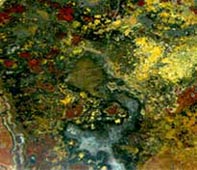
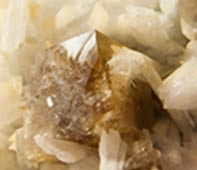
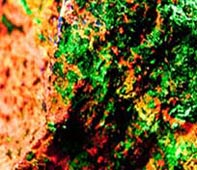
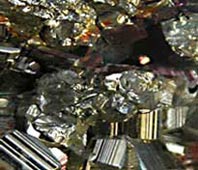
American Lands Access Association — ALAA
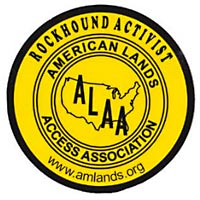
Hot Topics from the ALAA
The ALAA (American Lands Access Association) is the lobbying arm of the American Federation, working on behalf of rockhounds to keep public lands open and accessible to all, including the elderly and handicapped. For more information about who they are, what is going on or to become a member, visit their website at: http://www.amlands.org/.
Who needs to band together to fight public land closures?
hikers, bikers, rafters, hunters, rock hounds, fishermen/women, equestrians, campers, prospectors, miners, boaters, dirt bikes, rock crawlers, loggers, kayakers, astronomers, bird watchers, snowmobilers, cross-country skiers, rock climbers, marksmen/women, 4x4s, nature photographers, jeep racers, mushroom collectors, long-range shooters, ranchers/grazers, rural communities
Utah Pushing to Remove Police Powers from BLM, Forest Service
By Pete Kasperowicz
Senior Editor, Washington Examiner (March 22, 2016)
Posted: 6/1/16
Utah's four House Republicans introduced a bill that would strip the Bureau of Land Management and U.S. Forest Service of their power to police federal lands, and give that power over to local cops. Rep. Jason Chaffetz and his three GOP colleagues from Utah introduced the Local Enforcement for Local Lands Act. The lawmakers say the growth of policing authority in both agencies has distracted them from their main mission of managing federal land, and has created conflicts with local authorities. They also say federal agents are not as trusted as local police, and should be removed. "Federal agencies do not enjoy the same level of trust and respect as local law enforcement that are deeply rooted in local communities," Chaffetz and other lawmakers said. "This legislation will help deescalate conflicts between law enforcement and local residents while improving transparency and accountability." "The BLM and U.S. Forest Service will be able to focus on their core missions without the distraction of police functions. This is a win all around," they added. A letter the Utah Sheriffs' Association sent to Chaffetz shows that federal police agents and their local counterparts are butting heads, and that local police believe the feds are intruding on local authority.
(From the Jan.-Mar., 2016, ALAA Newsletter)
It Depends on Your Interpretation of the Law . . .
Reported by Shirley Leeson
Posted: 5/1/16
At the January meeting of ALAA in Quartzsite, Mike Hunerlach, US Forest Service Head Geologist (recently retired) spoke on "Rockhounding on Public Lands Managed by the Forest Service" and also gave insight into the laws, rules and regulations that affect collecting rocks, minerals and invertebrate fossils. Mike did a great job of telling us about the Mining Law of 1872 and how it is interpreted today by those in the Forest Service—which isn't necessarily the way the law is written. His strong suggestion was to get a copy of the Code of Regulations, Title 36, Parks, Forests and Public Property. He said he would help us locate those sections that are pertinent to rockhounds.
This is important because the newly hired rangers from the universities are leaning toward protecting plants, animals, trees, grasses and other nonhuman entities rather than managing our public lands for multiple uses by human beings, as the law provides. Frequently Mike found, in coming in to clean up a misunderstanding between ordinary humans and the Forest Service personnel, the rangers really weren't using the letter of the law, but their own interpretation of the law. In addition to Title 36, there is also Title 43, Public Lands, Interior Department. You can obtain your own personal copy from the US Printing Office or from Amazon. Or, you may also go to ALAA's site, www.amlands.org. On the home page, scroll down to the article about the January meeting and click on either of these titles and download any part of either Title 36 or Title 43. (Beware: if you want a hard copy of Title 43, get the second book, from page 1000 on. I bought the first one and all the information I needed was in the second book.)
Mike has offered his help in learning more about the Code of Regulations and how to use it to our advantage—and this is a huge help.
(From the Jan.-Mar., 2016, ALAA Newsletter)
National Monument designations
ALAA Action Alert Committee
Posted: 4/8/16
The threat of more national monument designations that will restrict our access and ability collect rocks and minerals is not going away especially in the closing months of the Obama Administration. The Chairmen of three House committees have written to Administration officials requesting up-to-date information about further monument designations under consideration by the White House. This effort follows an initiative led Rep Paul Gosar (R-AZ) and 30 other House members requesting that the House Appropriations Committee insert in the 2017 appropriations for the Department of the Interior restrictive language on how a President can use the 1906 Antiquities Act for the designation of more monument areas.
ALAA was supportive of the Gosar letter and was glad when other House members joined with him in signing the letter. It's too early to know what action, if any, the House Appropriations Committee will take on this request, but we are encouraged that more and more members in the House and the Senate are actively exploring various ideas on how to curb presidential excesses when utilizing the 1906 Antiquities Act for the designation of national monuments that closes our rights to access and the collecting of rocks and minerals for personal and educational usage.
As more information on National Monument designations becomes available ALAA will attempt to keep members informed through the ALAA Website and Electronic media notification.
Happy Rockhounding and Enjoy Your Public Lands
(From the Oct.-Dec., 2015, ALAA Newsletter)
Rockhound Soapbox
By John Martin, ALAA Webmaster
Posted: 4/1/16
Grass roots! Those two words are now the most important words in the rockhound vocabulary. Without the grass roots efforts of rockhounds and fossil and mineral collectors, collecting areas will soon be swallowed up in wilderness, national monuments and environmental study areas and maybe even in wind and solar generating facilities.
Rockhounding organizations (like ALAA) do not have the financial resources, personnel or legal representation needed to wage the legal struggle against the groups opposing mixed-use access to public lands. The only way to keep collecting areas open is with grass roots efforts by all rockhounds who may collect or have collected in these areas. The voice of the rockhound needs to be heard and as loud as possible. If our voices are not heard in the places where laws and regulations are made, we, the amateur collectors of rocks, minerals and fossils, will lose access now and for future rockhounds.
(From the Oct.-Dec., 2015, ALAA Newsletter)
We Spoke Up and They Listened
By Ruth Hidalgo, ALAA Membership Chair
Posted: 3/1/16
Living in Southern California and having collected at most of the areas still accessible in the old Gem Trails of Southern California Guide, I was aghast when I took a look at the maps posted for a massive plan (DRECP) to designate where to focus solar and wind in Southern California. They wanted to put a solar or wind farm directly on top of two longtime favorite and beloved collecting areas, Gem Hill and Brown Butte. I immediately went to work telling everyone we had to do something. Fortunately ALAA invited me to attend a workshop on the DRECP, where I learned how to make a comment on the DRECP. It wasn't nearly as hard as I had anticipated. I showed my friends and fellow rockhounds it wasn't so hard and they too sent in comments. I am so very excited to find the focus areas on Brown Butte, aka Lonely Butte, and around Gem Hill have been removed, as we requested, in the final draft of the DRECP!
Now these were just two of the many collecting areas affected in many different ways under the DRECP. Again, ALAA was to the rescue with a complete analysis of the 12,000 page DRECP plan as it pertained to rockhounding, done by Randy Banis. Many rockhounds also made comments based on that analysis. As of this writing, I have not yet been able to check each of the other points made in those comments, but I am optimistic.
A very big "Thank You" to ALAA for recognizing the significant impact the DRECP has on recreational access in the Southern California deserts and for providing the resources and tools for rockhounds to have made an impact on the final draft.
(From the Oct.-Dec., 2015, ALAA Newsletter)
Will Rockhounds Still Have Access to Graveyard Point,
McDermitt, Texas Springs, Davis Creek, etc.?
Posted: 2/1/16
The following sentence comes from the ALAA board minutes of October 24: "The sage grouse issue is still with us and that alone could shut down the lion's share of the West." The issue is that sage grouse and their nesting areas have to be protected, and federal regulators are now discussing which activities will be allowed on land that is considered sage grouse habitat (10 million acres). Will they allow camping in these public areas? Hiking? Rockhounding? As of now, rockhounding is NOT considered a recreational activity that will be allowed on these lands. Below are two paragraphs from a long letter that past ALAA President Shirley Leeson wrote to BLM officials in DC:
"Many of the areas that will be impacted are located in SW Idaho, SE Oregon and N Nevada, but also SC Idaho and NE Nevada. They include: Gravepoint Point, Texas Springs, McDermitt and Davis Creek, long-time rockhounding locations known throughout the US and internationally. But they are only the well-known areas, there are hundreds more. What is the economic impact on those small towns close by, and USFS and BLM camping grounds that won't be used any longer, with these areas closed to casual collecting?
"Rockhounding as a recreational activity does not present a negative impact to the management of sage grouse and is allowed under federal law. We request that rockhounding be identified as a recreational activity in the ROD implementation plans, allowing rockhounds and the public to continue collecting rocks and minerals in sage grouse management areas."
http://amlands.org/190534.html has lots more information on this. If you want to write Washington about this, do it soon.
Wilderness Proposed for Indian Creek Allotment,
a Historic Fairburn Agate Area
Reported by Jan Baumeister
(SD rep for ALAA, AFMS and the Rocky Mt. Federation)
Posted: 1/1/16
The Forest Service Buffalo Gap National Grassland rangers in Wall, SD, held two meetings in June with the rancher/permittees of the Indian Creek Allotment, giving them only two days' notice. They were told: "Indian Creek is going into wilderness." The only notice of this meeting was put in the Wall newspaper and not the Rapid City Journal! It seems they don't want all other "users" protesting! This is one of our major areas to hunt Fairburn agates and the rare black agates, plus other specimens. It is the most scenic beautiful area of the grasslands, with badland buttes of golden yellow or a light brick red, topped with a layer of white, with cedar trees, and the creek snaking through the valleys.
Awhile back they finally put a nice graded trail in there, but now they want it closed down in the future to a total wilderness, where one can only hike in or ride in on horseback!
There are six big wilderness clubs in the Black Hills-Badlands areas, and they have the backing of 60 other wilderness clubs and the Nature Conservancy. The main reason behind this wilderness designation is that many people, including one rancher who runs buffalo in Indian Creek during the winter, want this land to be turned back to "wild land." . . . In 2010 the wilderness clubs couldn't get a wilderness bill for Indian Creek Allotment passed by Senator Johnson with the PAC money of 60 wilderness clubs. . . . It's a different situation now.
-from the July-Sept. 2015 ALAA Newsletter.
Dugway Geode Claim
Posted: 12/8/15
To all Rockhounds Everywhere,
ALAA received this request to help save the Dugway Geode beds from extinction! If you have ever collected any of the Dugway Geodes and would like to collect them again or would like to collect these one of a kind Geodes in the future now is the time to get involved in a Grass Roots action. Yes this claim is in Utah and it is a commercial mining claim. Under the mining laws as long as the claim is active the access to the claim must remain open. Some of you reading this are on the East Coast and Utah seems like a long long way away. It is, but if you have ever collected there or know someone who has collected there in the last 50 years or would like the experience of collecting the Dugway Geodes now is the time to take action and try to save the Dugway Geode Beds. If the claim is lost the entire Dugway Geode Beds may be in danger of complete closure. Think about it and take the power of the pen and contact the Utah BLM and let them know that this resource needs to remain open and accessible for future generations of Rockhounds to enjoy. In your writings to the BLM, let them know that whether the mining claim is renewed or not, you are asking the BLM for assurance that the Dugway Geode Beds and their access roads will remain open for public recreational collecting. Below are email addresses to contact all of the parties involved in the Dugway Geode Beds issue. Please help "Save the Geodes!"
American Lands Access Association
Action Alert Committee
"Happy Rockhounding and Enjoy Your Public Lands"
Save the Geodes! The BLM is threatening to close the only commercial claim on the Dugway Geode beds, in operation for the last 50 years, because the renewal paperwork was late this year. The claim is run by the Crapo family under the business name "The Bug House" and new mining claims will not be issued by the BLM for any commercial geode mining because the geode bed is a restricted area.
Public response to urge renewal of the claim is critical. The Crapo family has always supported the rock hound community and made sure that anyone who collected on their claim came away with lots of good geodes. Now it's our turn to support them so please get the word out to anyone interested in preserving this important collection area.
Please send your e-mails in support of renewing this important claim to the following e-mail addresses at the BLM and bcc the bughouse at their address below, so they can see who is supporting their efforts.
Deputy State Director Lands & Minerals: Kent Hoffman e-mail: khoffman@blm.gov
Minerals Support Supervisor: Robert L Bankert e-mail: rbankert@blm.gov
Bureau of Land Management Fillmore Field Office e-mail: utfmmail@blm.gov
The Bug House e-mail: bughouse@xmission.com
Sierra Club Wants Roads To Rockhound Areas Closed
Posted: 9/13/15
Below is an email sent out by Jim McGarvey of the Riverton Mineral and Gem Society. He is also the Wyoming State Rep for Public Lands Advisory in the Rocky Mt. Federation.
I'm sorry to inform you that the Sierra Club is forcing the Forest Service to close roads to motorized travel in some of rockhounds' favorite collecting areas. Would you be happy if they closed the roads into the Wiggins Fork area so you can't go in and collect Wiggins Fork wood anymore? That's one of the areas that will be closed. It seems that the Sierra Club got something like 23,000 letters to be sent to the Shoshone National Forest planners to close down those roads and many other roads in Wyoming. At a recent meeting a representative of the Sierra Club pointed to a map and told the Forest Service representative that these are the roads he wanted closed.
Rockhounds have got to start participating in these government decisions if they want to continue to collect rocks. This is not just in Wyoming, its happening all over our United States! What do YOU want to do about this? Rock clubs can't do much. It's up to the individuals in the clubs to act. We need a national response to this control of our hobby. I hope you can muster up the courage to fight this obstacle to our "pursuit of happiness"!
-from the July-Sept. 2015 ALAA Newsletter.
New Regulations Defined for Fossil Collecting in National Forests
Below is a link to the ALAA Newsletter for April-June, 2015. The rules and regulations for collecting fossils on US National Forest-managed lands have had significant changes, effective May 18, 2015. John Martin (of ALAA's Conservation and Legislation Committee) has done a really spectacular job of summarizing the new regulations in readable form. An excerpt would not do justice to the information he summarizes for us, so it's better to point you to the complete article and let you read it yourself. It's several pages of very important information for those who want to do casual collecting of fossils in our national forests. The article starts on page 5 and you can find the issue via this link: http://www.amlands.org/media//DIR_24612/DIR_402734/58269c7954016a5ffff81c3ffffe904.pdf. OR (maybe easier to manage) you can just go to www.amlands.org, click on "Newsletters" on the left, then click on "April-June, 2015."
